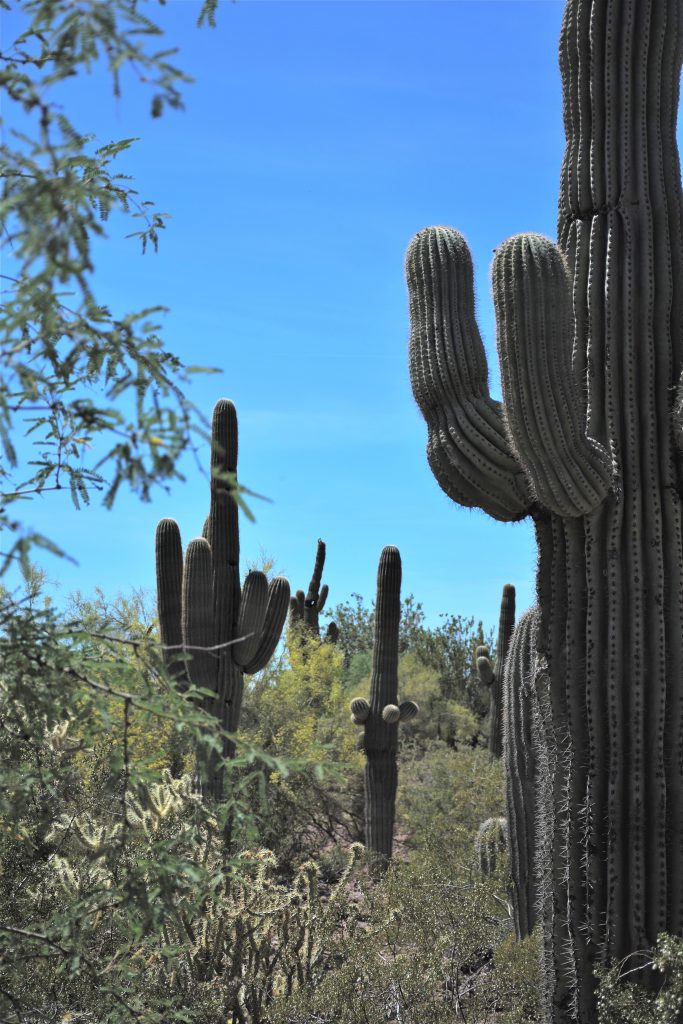The Saguaro cactus, Carnegiea gigantea, is the most famous and characteristic plant of the Sonoran desert. This gigantic, tree-like cactus is an Arizona icon!
Description
The main trunk of a mature Saguaro may be 40 feet high and 2 feet in diameter. A woody inner skeleton provides the strength to support ten arms or more. Although the age of a Saguaro is impossible to pinpoint because it doesn’t have growth rings like a tree, one indication of age is the appearance of arms. They start to grow when the cactus is around sixty or seventy years old. Experts believe Saguaros can live to be about two hundred years old. The medium green skin covers twelve to twenty-four ribs, which expand and contract like an accordion depending on the amount of stored moisture within the plant. Stout gray spines occur in crowded clusters along the ribs. The central spine of each cluster is 2 to 3 inches long, while the radial spines are generally shorter. In May and June, the tips of the arms and the main stem are crowned with funnel-shaped, 3-inch-wide flowers with waxy white petals. Each flower blooms only once, opening at night and staying open into the next day. This is the state flower of Arizona. Smooth-skinned green fruits the size and shape of chicken egg spilt open at maturity. The red inner pulp sometimes causes the fruits to be mistaken for flowers. The pulp, which contains tiny black seeds, is edible and very tasty.
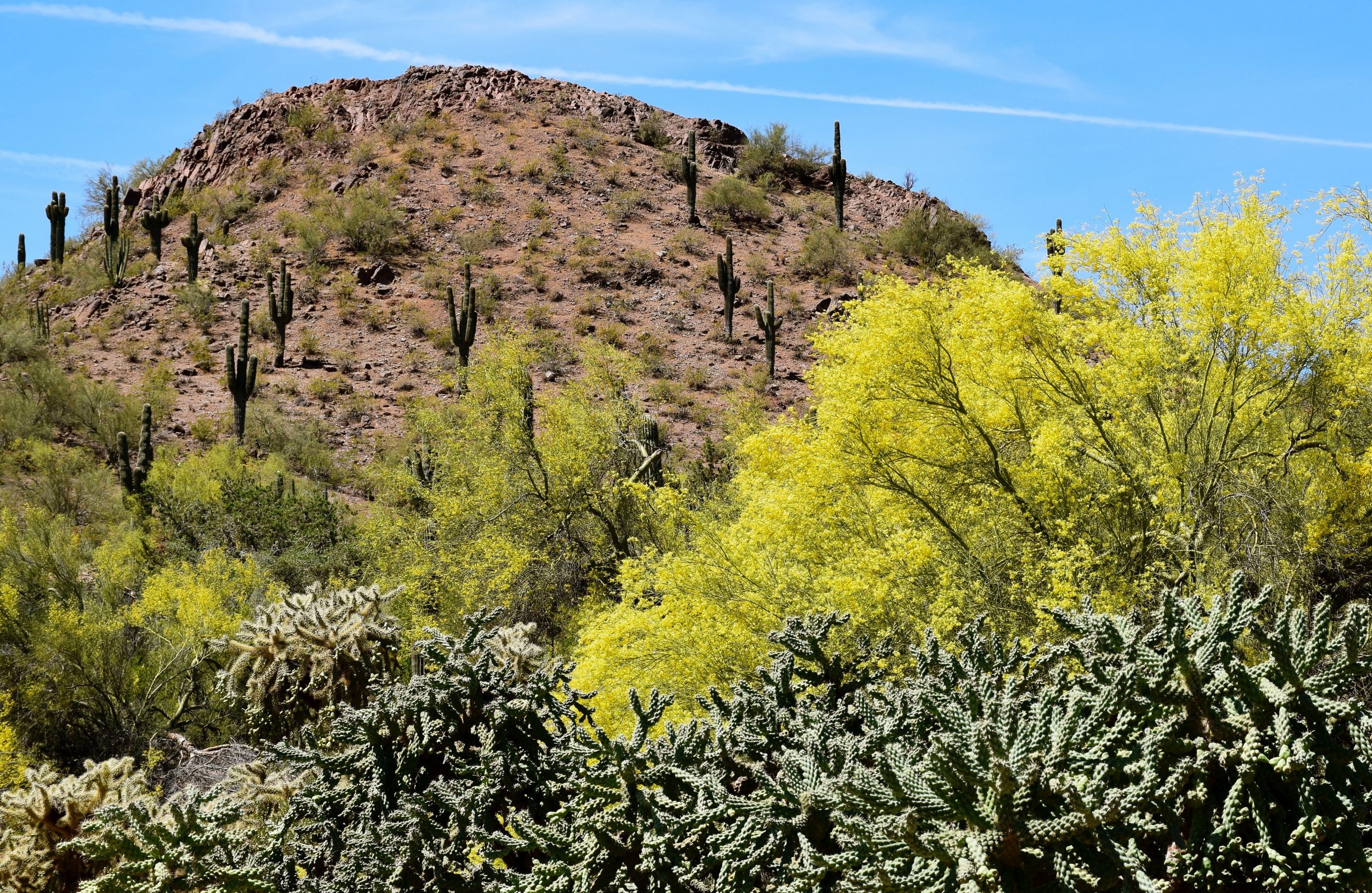
Native Distribution
Saguaros occur below 3,500 feet in elevation, on gravelly slopes. Their distribution is limited to southern Arizona, the extreme southeastern edge of California and Sonora, Mexico.
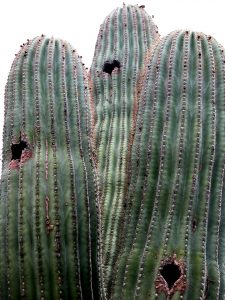
Culture
Saguaros require well-drained soil and full sunlight for best growth. Young nursery-grown plants will probably need protection from the sun after transplanting. You can cover the plant with a piece of woven shade cloth through its first summer. If you move a Saguaro, keep the same orientation to the south to avoid sunburn on the tender, less exposed skin. Although mature plants can be moved, transplant success decreases with age. Young plants can be watered once a month during extended drought; older established plants can survive on rainfall alone. Saguaros, particularly seedlings and very old plants, can be severely damaged or killed below 21 degrees Fahrenheit. Bacterial rot can also affect Saguaros; older plants seem to be more susceptible. The rot causes normally green, firm tissue to become brown and mushy, oozing a black foul-smelling liquid. By the time the problem is noticed, it usually has spread extensively through the plant, and death is imminent. Unless the dying Saguaro poses a danger to buildings, people, or other plants, you can let it decay naturally until just the skeleton remains. Some people like to use the skeleton remains as a decorative element in the landscape.
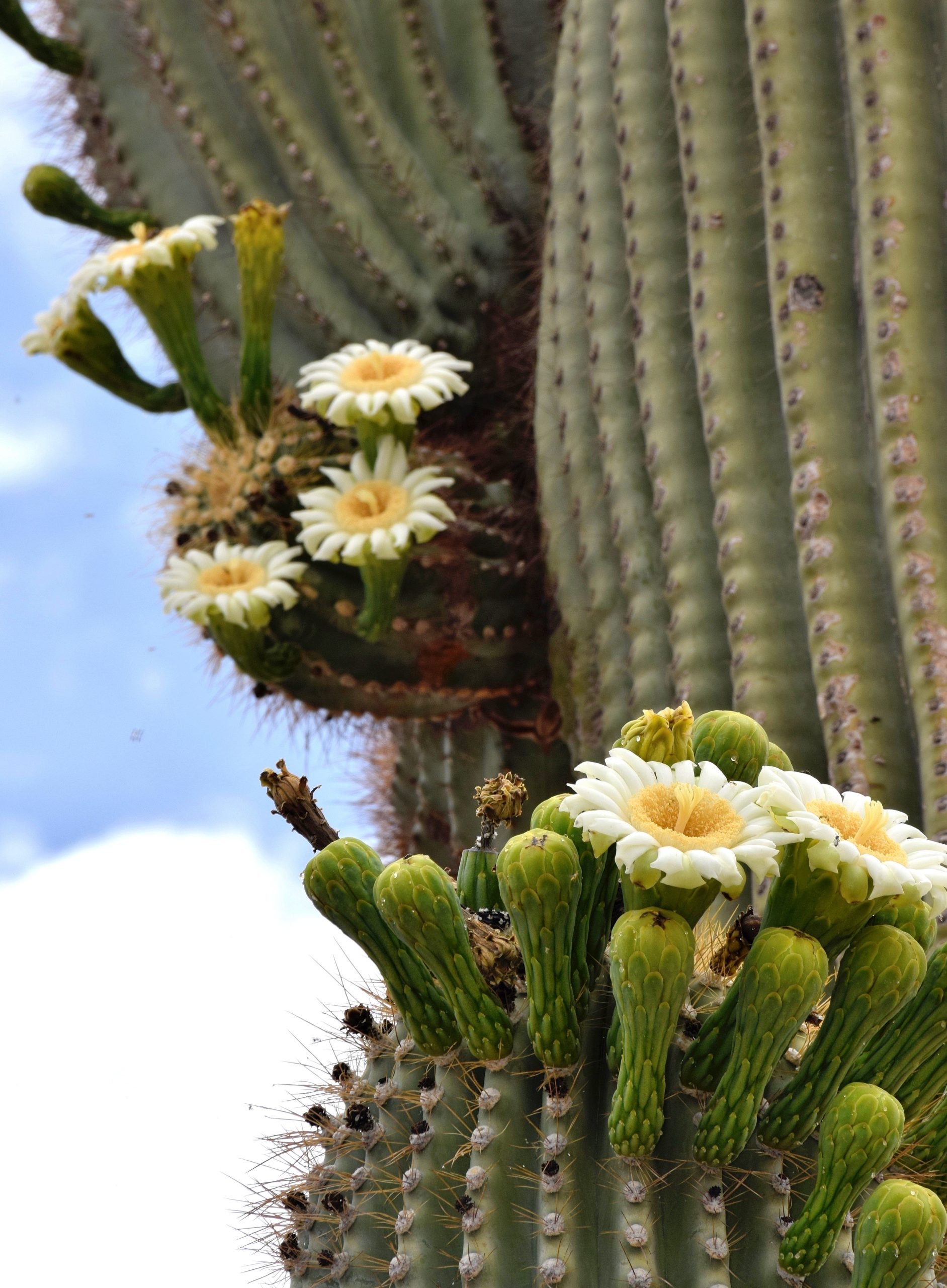
Gila wood peckers and gilded flickers make their nesting holes in the main trunk and arms of Saguaros. Other birds such as elf owls and starlings take over the holes after the original occupants move on. Although the nest building is a natural process, the Saguaros in developed communities are affected more heavily because there are fewer per area than in natural desert. The flickers’ holes are potentially the most harmful, because they disturb water transport tissues in the upper part of the plant. You may be able to discourage birds’ excavations by making a life-size replica of either a Gila woodpecker or a gilded flicker and putting it on the Saguaro. These birds are territorial and may be driven away by the impostor “bird.” If the excavation has already begun, you might be able to discourage further activity by wedging a circle of hardware cloth into the opening. Do not fill the hole with any substance like concrete.
Landscape Use
Saguaros, more than any other plant, say “Southwest.” One outstanding specimen could be the focal point of an entire landscape. Locate the cactus well away from structures and pedestrian areas. You might plant “spears” (young plants without arms) of different sizes in naturalistic desert landscape to mimic the range of sizes found in nature. Because Saguaros are slow growing, they are also well suited to planting in containers. Birds relish the pulp of Saguaro fruits.
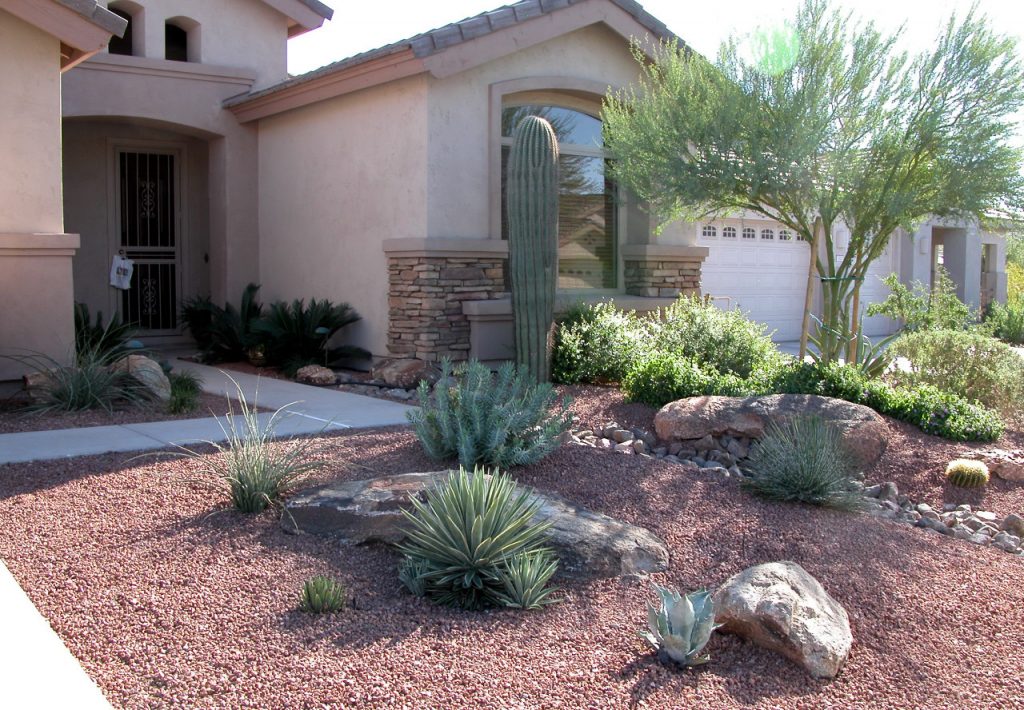
Did you know that up to 70 percent of water use is outdoors? That’s why we love desert plants and feature them each month. You can learn more about Saguaros and other plants on our Arizona Low-Water-Use Plants page. Visit our page on Choosing and Planting Low Water-Use Plants for tips on plant selection and how to plant properly. Also, be sure to read through all of our featured Plant of the Month blogs!
From time to time, Water – Use It Wisely features guest bloggers who write about topics related to water and water conservation. Judy Mielke is a horticulturist, Landscape Architect and the author of one of Water – Use It Wisely’s favorite books. You can find plant descriptions like this and many more in her book, Native Plants for Southwestern Landscapes.


